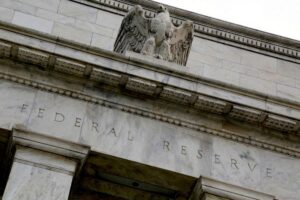Understanding Recent Developments in the Bond Market: Key Takeaways
The bond market has recently danced on a knife’s edge, with various factors influencing its trajectory. Recent comments from Federal Reserve officials and Treasury Secretary Scott Bessent have sparked renewed discussions regarding the future of Treasury yields and government debt issuance. Let’s delve into the latest insights and what they mean for investors navigating this complex landscape.
Potential Changes in Federal Reserve’s Strategy
The minutes from the Federal Reserve’s January 28-29 meeting indicated that officials are considering a possible slowdown in the drawdown of their balance sheet, a process known as quantitative tightening (QT). This reconsideration is not without reason; federal budget constraints could impede the Fed’s ability to assess market liquidity effectively. A pause or slow in QT could provide short-term relief from the jitters currently plaguing the bond market.
As an investor, such strategic shifts are crucial to watch. If the Fed decides to pause QT, it could stabilize bond prices and potentially provide a favorable environment for bonds that investors might have otherwise shunned during periods of rising yields.
Treasury Secretary’s Insights
In a recent Bloomberg Television interview, Treasury Secretary Bessent noted that expanding long-term government debt issuance is currently not on the table. His remarks are instructive; they suggest a more cautious approach to government borrowing, a stark contrast to widespread market sentiment anticipating increased government debt due to significant tax cuts proposed by the Trump administration.
A careful balance is necessary, especially given forecasts that the Treasury may need to issue more debt to counter falling revenue projections from these proposed tax cuts. Professionals like Brij Khurana from Wellington Management emphasize that Bessent’s awareness of funding costs is refreshing amid ongoing fiscal challenges.
Bond Yields and Market Expectations
Market participants greeted the Fed minutes and Bessent’s commentary, leading to a decline in Treasury yields. Nonetheless, the bond market is still rife with expectations of heightened government borrowing needs in the upcoming fiscal year. Analysts from JPMorgan have commented that concerns over excessive debt supply may fade, yet they acknowledge that substantial borrowing will still be required.
Given that Trump intends to extend tax cuts from 2017 that could exacerbate deficits by over $4 trillion over the next decade, investors remain skeptical about how these fiscal moves will balance out in terms of revenue and spending.
The Role of Cost-Cutting Measures
Notably, some may find solace in the efforts of Elon Musk’s Department of Government Efficiency (DOGE), which aims to identify inefficiencies and waste within government spending. While estimates suggest that DOGE has saved taxpayers around $55 billion, skepticism remains about the effectiveness of these efforts in substantially offsetting potential budget deficits.
Brian Kennedy from Loomis, Sayles & Company raises a pertinent question: Can DOGE’s cost-cutting initiatives meaningfully counter the anticipated increase in deficit spending from tax cuts? This uncertainty adds another layer of complexity for investors.
Fed’s Bond Portfolio Reassessment
Interestingly, the Fed minutes also revealed that officials are considering altering their bond portfolio to align closely with the overall maturity structure of the Treasury market. This shift could impact auction sizes, particularly for shorter-dated securities. Analysts from BMO Capital Markets noted that such adjustments, when combined with budgetary processes and tax revenue performance, could influence auction dynamics significantly.
Conclusion
The bond market is witnessing a confluence of fiscal strategies, government spending adjustments, and Federal Reserve maneuvers. As we continue to monitor these developments, it’s essential for investors to stay informed and adaptable. Moving forward, investors should watch for both macroeconomic signals and policy shifts that could reshape the landscape of government debt and interest rates.
With so many variables at play, there is always potential for volatility—meaning that thorough analysis and strategic planning will be more important than ever. Whether you’re a seasoned investor or just entering the bond market arena, understanding these dynamics will undoubtedly provide an edge in making educated decisions.

